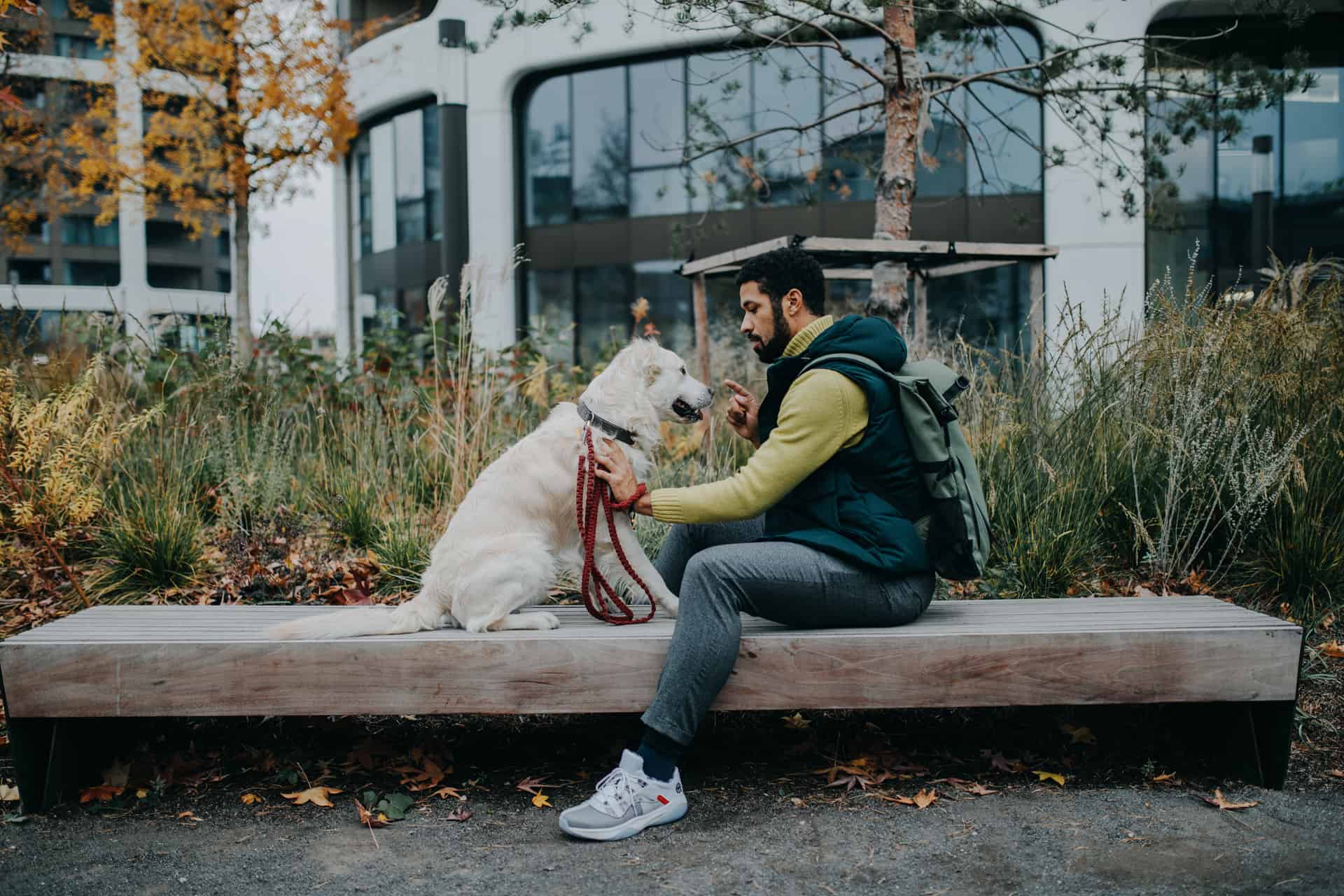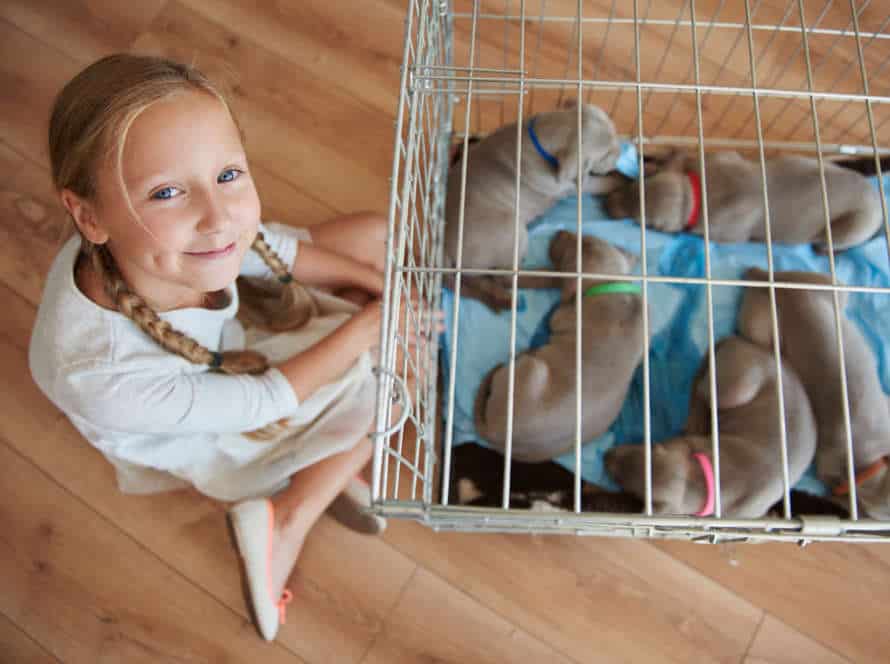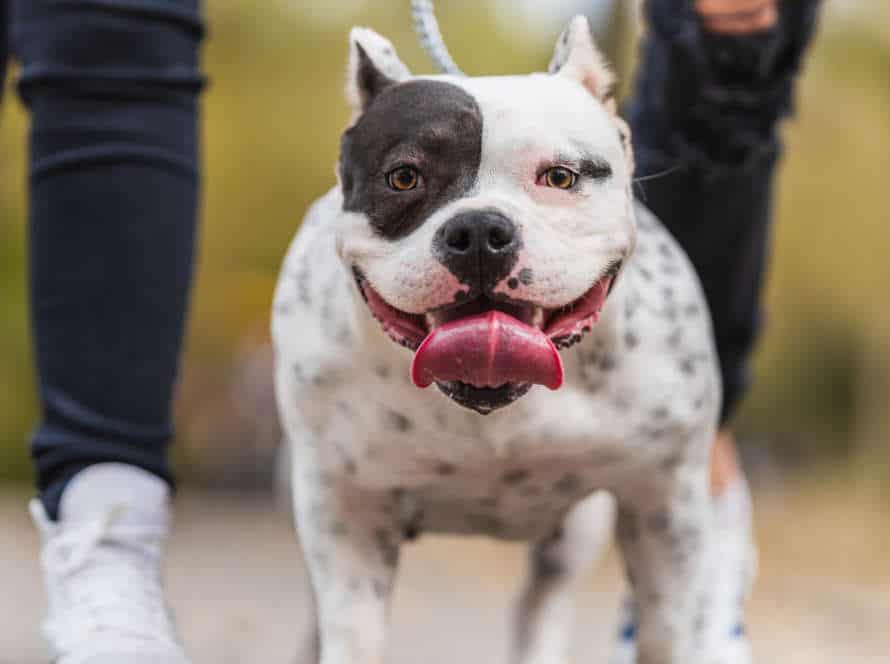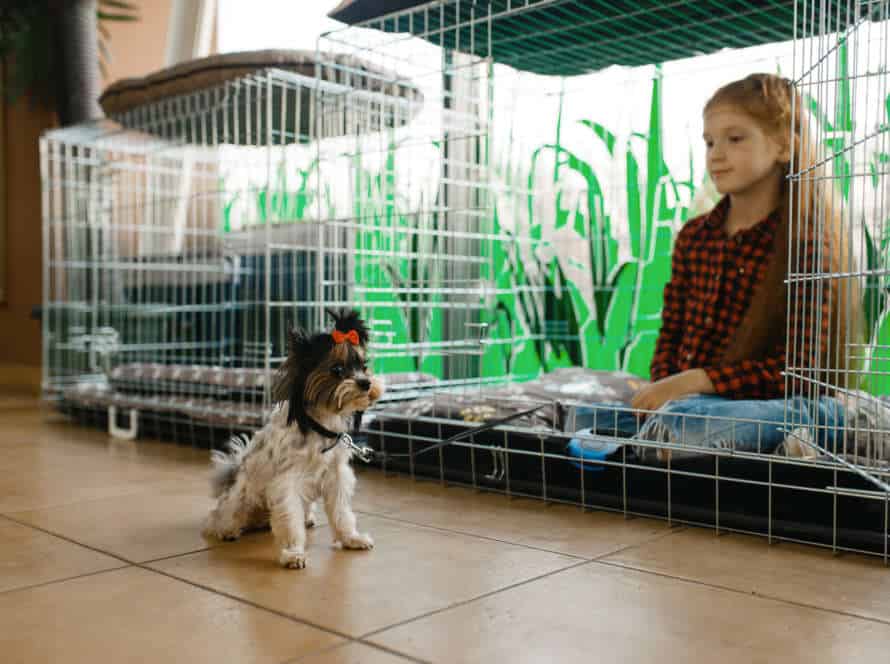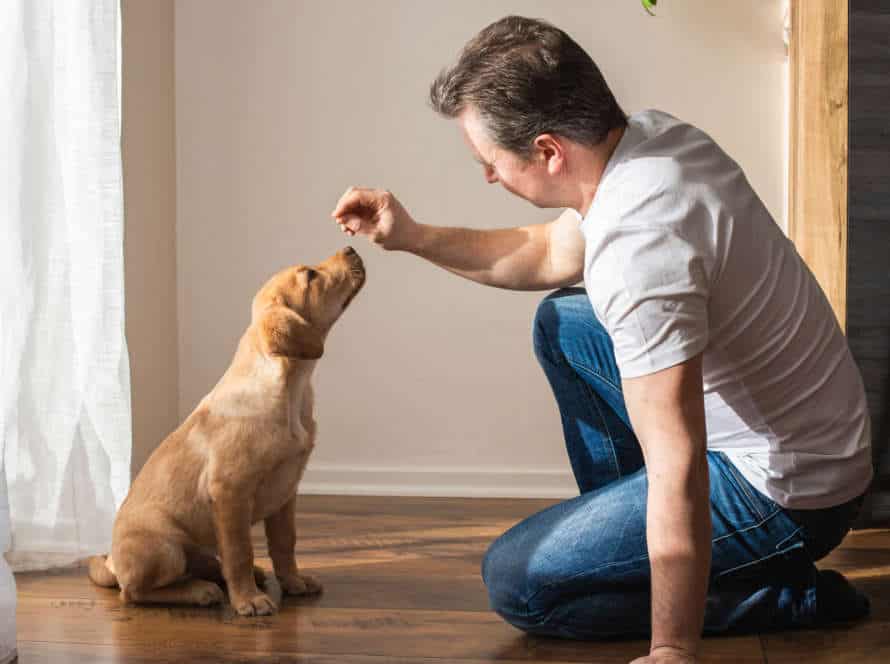Understanding Leash Reactivity: Why Does My Dog React on Leash?
Leash reactivity is when dogs act aggressively or anxiously while on a leash. It may include barking, lunging, or growling. It’s important to figure out why this happens.
Common causes are fear, anxiety, overstimulation, territorial behavior, or lack of socialization.
To prevent leash reactivity, socialize your pup from a young age and use positive reinforcement techniques. Also, try changing direction, creating space, or distracting your dog’s focus. This way, you can make a safe and positive environment for your pup.
Pro Tip: If your dog’s leash reactivity is bad, get help from a professional.
The Concept of Leash Reactivity
Leash reactivity is an issue lots of pup owners face. It’s one of the most irritating, difficult problems to tackle. To grasp leash reactivity, it’s key to know why it happens and what can be done to address it. This article talks about leash reactivity. We’ll take a closer look, learn its causes and how it can be managed.
Definition and Characteristics of Leash Reactivity in dogs
Leash reactivity is a common behavior in dogs. It’s when they act aggressively or anxiously while on a leash. Signs of leash reactivity include growling, barking, lunging, and pulling. There are many causes. These can be fear, anxiety, aggression, or poor training. Improper socialization, past trauma or abuse, lack of exercise or mental stimulation, or a genetic predisposition towards anxiety or aggression, can all lead to leash reactivity.
As a dog owner, it’s important to recognize the signs and work with a professional. Positive reinforcement techniques, proper training, and exercise can help reduce leash reactivity.
Types of Leash Reactivity: Aggressive and Fearful
Leash reactivity is a common issue for dogs. It can appear as two different types:
- Aggression can include barking, growling, lunging or biting when on a leash.
- Fearful behaviour may look like cowering, tail tucking or hiding behind the owner.
It’s important to identify which type of leash reactivity your dog has. Get help from a professional dog trainer to create a plan that suits your dog. Leash reactivity can be reduced or even gone with patience, consistency and suitable training.
Common Triggers for Leash Reactive Behaviors in Dogs
Leash reactivity in dogs is an oft-seen behavior problem. Knowing the triggers helps owners comprehend their pup’s behavior and set up suitable training. Here are some common causes:
- Fear: Fear may cause your dog to act aggressively towards strangers or other animals on the leash.
- Lack of socialization: Dogs with no socialization or exposure to new faces and environments may feel threatened, leading to negative reactions.
- Frustration: When dogs are frustrated with their leash, or a lack of exercise or playtime, they may show leash reactivity when they see people or other dogs on a walk.
- Pain or illness: Pain or health issues, like arthritis, vision problems, or hearing loss, can make your dog feel vulnerable and trigger leash reactivity.
To modify this behavior, it is important to identify the cause. Professional dog trainers can help create personalized training plans.
Understanding the Causes of Leash Reactivity
Leash reactivity is typical in doggies. When they spot certain triggers, they bark, lunge, or pull on the leash. To understand why this happens and solve it, let’s learn what might be causing it. Check out this article to gain knowledge about your pup’s leash reactivity. Plus, discover how to address it.
Lack of Socialization and Training
Leash reactivity in dogs is often caused by a lack of socialization and training. If a dog is not exposed to different people, animals and environments during the critical socialization period, it may become anxious in unfamiliar situations when out on walks. Besides this, if they have not received proper leash manners and obedience training, they’re more likely to pull, lunge and bark.
To prevent and manage leash reactivity:
- Start socializing your dog early, introducing them to new people, animals and environments in a positive and controlled way.
- Teach them commands like ‘sit’, ‘stay’ and ‘heel’ to help manage their behaviour on walks.
- Use positive reinforcement techniques, rewarding them for good behaviour and redirecting their attention when they become reactive on the leash.
- Be patient and consistent with your training efforts. Plus, seek help from a professional dog trainer if needed.
- Pro Tip: Before walks, practice calming exercises with your dog such as deep breathing and gentle massages to help them relax and reduce the likelihood of leash reactivity.
Negative Experiences with People and Other Dogs
Leash reactivity is a common issue for dog owners. It is when your dog barks or acts aggressively towards people and other dogs while on a leash.
The cause of leash reactivity can be various things.
- Not enough socialization during early pup years.
- Negative experiences with people, dogs, or animals.
- Fear and anxiety from unfamiliar places.
- Aggression and dominance problems.
It is important for pet parents to understand the cause of the leash reactivity and work to solve it.
A professional trainer, more socialization, and avoiding punishing training methods can help leash reactivity and make walking your pup better.
Genetic Predisposition to Reactivity
Leash reactivity in dogs may be down to genetic predisposition. Studies suggest Terriers, Beagles and some herding breeds are more likely to display this behaviour due to their instinctive hunting and chasing habits.
It’s important to remember that each dog is unique. Environment and training have a major impact on a dog’s reactions to stimuli.
Early socialization, obedience training and positive reinforcement can help stop or manage leash reactivity. This applies to all breeds and genetic backgrounds.
Anxious and Stressed State of Mind
Anxiousness and stress in a dog often leads to leash reactivity. They may think other dogs or loud noises are a danger. Other causes can be lack of socialization, fear, trauma, mixed signals from the owner, or an illness.
To deal with this, positive reinforcement is important. Desensitization and counter-conditioning can help. This involves exposing the dog to the stimulus that triggers the reaction in a safe atmosphere, and rewarding them for calm behaviour.
Physical and mental exercise for the dog is also key. Consider seeking professional help if needed.
Remember, it takes time, patience and consistency to address leash reactivity. But with the right techniques and support, your dog will be more confident on a leash.
How to Prevent and Manage Leash Reactivity
Leash reactivity is a common issue with many dogs. When outside, they can become overwhelmed and overstimulated. This behavior can range from barking and jumping to lunging and growling. And, unfortunately, it can even escalate to aggression. Understanding why your dog is leash reactive and how to manage it can help. Here we’ll explore the causes of leash reactivity and how to prevent and manage it.
Early Socialization and Positive Training
Early socialization and positive training are major keys to preventing and managing leash reactivity in dogs. This typically manifests as lunging, barking, and growling while leashed, and is often due to fear, frustration, or lack of socialization.
To help with this, there are two main things you can do:
- Early Socialization: Introduce your pup to different sounds, people, animals, and environments. Make it a positive and rewarding experience.
- Positive Training: Use treats and praise to train your pup. Teach them basic commands and use them consistently on walks to redirect their attention and stop reactive behavior.
By combining these two methods, you can keep your pups’ walks stress-free! Pro Tip: If you’re having trouble managing leash reactivity, reach out to a certified dog trainer or behaviorist. They can provide tailored advice and support for your pup’s particular situation.
Creating a Safe and Positive Environment for Your Dog
Creating a secure and pleasant atmosphere for your pup is essential for their physical and mental wellbeing. If your pup is leash reactive, it can be an anxious experience for the two of you.
Leash reactivity occurs when a pooch gets overly excited or aggressive when they come across other dogs or people on walks. Here are some tips to stop and oversee leash reactivity:
- Keep your pup on a short leash and don’t use retractable leashes.
- Teach basic commands like “sit,” “stay,” and “leave it.”
- Refrain from punishing them for their behavior; this can just make them more anxious and aggressive.
- Use positive reinforcement to reward good behaviour.
- Get expert help from a dog trainer or behaviourist to build up a personalised training plan.
To make a safe and positive environment for your pup, understanding leash reactivity is key. By following these tips, your walks can be fun and stress-free for both you and your pup.
Avoiding Triggers and Desensitization Techniques
Prevent leash reactivity in dogs by using preventative measures and desensitization techniques. These aim to reduce stress and anxiety in leash-aggressive behavior. Here are ways to manage it:
- Avoid triggers. Be conscious of what sets off your dog’s aggressive behavior and avoid those situations. For example, if your pup gets reactive around other dogs, take them out at quieter times and in quieter areas.
- Desensitization. Expose your pup gradually to their triggers in a controlled and pleasant environment. Reinforce good behavior with treats and compliments. Seek professional guidance from a qualified dog trainer or behaviorist.
- Bonus tip: Start training your pup at home. Teach them focus and basic commands. These can help managing leash reactivity. Patience and consistency are vital when it comes to managing leash reactivity over time.
Seeking Professional Help when Necessary
Leash reactivity is a common issue for dogs. It can result in aggression, lunging, or barking when on a leash. There are techniques to manage it, but seeking professional help is key.
A pro can craft a personalized program for your pup. They understand your pet’s behavior and offer strategies to manage reactivity. They can also help you identify underlying issues that trigger reactivity, such as anxiety, fear, or overstimulation.
Seeking pro help is smart for your pet’s well-being. It ensures safe and fulfilling life for you and your pup.
Tools and Equipment to Aid in Reducing Leash Reactivity
Leash reactivity is common amongst dog owners. But don’t worry, there are tools and equipment to help manage it! Head halters, gentle leaders, calming treats, and long line leashes can provide an immediate solution. They can also work as a training platform for the long-term. Let’s explore these tools and see how they can help with leash reactivity!
Leashes, Harnesses, and Collars: Choosing the Right Tools
Leashes, harnesses, and collars are important for keeping your pup safe. To make sure your walks are pleasant, pick the right ones. Here are some tips to reduce leash reactivity:
- Opt for a no-pull harness that fits well around your pup’s chest. Or a head halter to control their head and body movement.
- Avoid aversive tools like choke chains, prong collars, and shock collars, which can hurt your dog and worsen reactivity.
- Use a short, strong leash that’s comfortable to hold and doesn’t give too much slack.
- Finally, reward good behaviour with treats, praise, and clicker training. This will promote obedience and reduce leash reactivity.
Calming Aids: Thundershirts, essential oils and pheromones
Leash reactivity is a common issue for many dog owners. Fortunately, there are several calming aids that can help reduce this. These include:
- Thundershirts – special shirts that provide a soothing effect, by applying gentle pressure.
- Essential oils – lavender and chamomile, that have calming properties. Used with diffusers, collars, or sprays.
- Pheromones – naturally occurring chemicals that reduce anxiety and stress. Synthetic versions are available in sprays, collars, and diffusers.
By combining these calming aids with behavior modification techniques, you can reduce leash reactivity and create a more relaxed walking experience.
Remember to consult your vet before using calming aids on your dog, to make sure it is suitable for their needs.
No Punishment: Saying No to Choke Chains and Shock Collars
Choke chains and shock collars can harm dogs’ mental and physical health. Instead, find humane ways to manage leash reactivity. Here are some useful tools and equipment:
- A front-clip harness. It helps stop pulling by directing your dog’s attention away from distractions.
- A head halter. It controls the head movement and prevents pulling.
- A treat bag. Positive reinforcement with rewards is a great way to train a dog out of leash reactivity.
Understanding leash reactivity is key. It usually happens when a dog is overwhelmed with excitement or anxiety. Handle it in a gentle, positive, and consistent way in order to make your dog secure and comfortable. Pro tip: Get professional training help, if needed.
Conclusion and Takeaways
Leash reactivity can be a challenge to handle. It takes lots of patience, consistency, and effort. But it’s worth it! To wrap up, it is important to realize why your pup is reacting on the leash. Taking action to help them work through their reactivity will make a huge difference. Here are some key points to remember from this article:
Understanding your dog’s behavior
It’s important for dog owners to grasp leash reactivity for a content and healthy relationship with their pup whilst out in public. Leash reactivity is what happens when a dog gets upset or overly excited when on a leash. Reasons for this often include fear, no socialisation and health issues. Growling, barking, lunging or snapping are all signs of leash reactivity.
To manage a dog’s leash reactivity, there are steps that can be taken. These include professional training, introducing your pup to people and other dogs, exercising and mentally stimulating them, and calming techniques like deep breathing or offering treats. Knowing what causes your dog’s leash reactivity helps you keep them at ease in public.
Top Tip: If you think your pup is displaying signs of leash reactivity, ask a dog trainer or behaviourist for help. They can help you and your dog create positive coping mechanisms.
Keeping your dog safe and stress-free on walks
Gaining insight into your pup’s leash reactivity is key to keeping them secure and relaxed on walks. Leash reactivity is caused when your pup feels scared, annoyed or overly excited whilst on a walk. This could be displayed in various ways, such as barking, lunging or trying to escape. Here are some tips to assist you in managing leash reactivity in your pup:
- Employ positive reinforcement training to make your pup used to triggers that induce reactivity
- Offer high-value treats to reward tranquil behavior and divert their focus from triggers
- Refrain from punishing or physically scolding your pup for reactivity; instead, stay serene and authoritative
- Consider using a front-clip harness or headcollar to give you more control of your pup’s movements
With patience and persistence, you can help your pup overcome leash reactivity and have peaceful walks together.
Building a positive relationship with your pooch on walks.
Leash reactivity can be a challenge to address. It is often caused by fear, anxiety or the desire to protect their owner. Negative reactions such as lunging, growling and barking at other dogs, people or objects may occur.
To tackle this issue, try desensitization and counter-conditioning. Desensitization is gradually introducing your pup to the situations that cause reactivity in a safe and positive atmosphere. Counter-conditioning is making use of treats or playtime to replace the negative reaction with positive behavior.
Patience, consistency and positive reinforcement are essential. Having an understanding of your dog’s behavior is the first step to having a successful and healthy relationship while on walks.
Frequently Asked Questions
1. What is leash reactivity in dogs?
Leash reactivity in dogs is when a dog exhibits an aggressive or anxious response, such as barking, lunging, or growling, while on a leash. This behavior is typically directed towards other dogs or people.
2. Why does my dog react on leash?
There are several reasons why a dog may react on leash, including fear, anxiety, lack of proper socialization, past experiences, and feeling restrained or frustrated on a leash. It is important to properly diagnose the cause in order to effectively address the behavior.
3. Can leash reactivity be cured?
While leash reactivity can be challenging to overcome, it is possible to see improvement with the appropriate training and behavior modification techniques. Working with a professional trainer or behaviorist can be helpful in developing a plan tailored to your dog’s specific needs.
4. Is leash reactivity dangerous?
Leash reactivity can be potentially dangerous if not properly managed. It is important to keep your dog and others safe by using a secure leash and collar or harness, avoiding triggering situations, and seeking professional help if necessary.
5. Should I punish my dog for leash reactivity?
No, punishment is not an effective way to address leash reactivity in dogs. It can actually make the behavior worse and damage the relationship between you and your dog. Positive reinforcement and consistent training are much more effective and humane methods.
6. How can I prevent leash reactivity in my dog?
Proper socialization, training, and exposure to different environments can help prevent leash reactivity in dogs. It is also important to use a secure leash and collar or harness and to keep your dog at a safe distance from other dogs or people until they are comfortable and well-trained.

